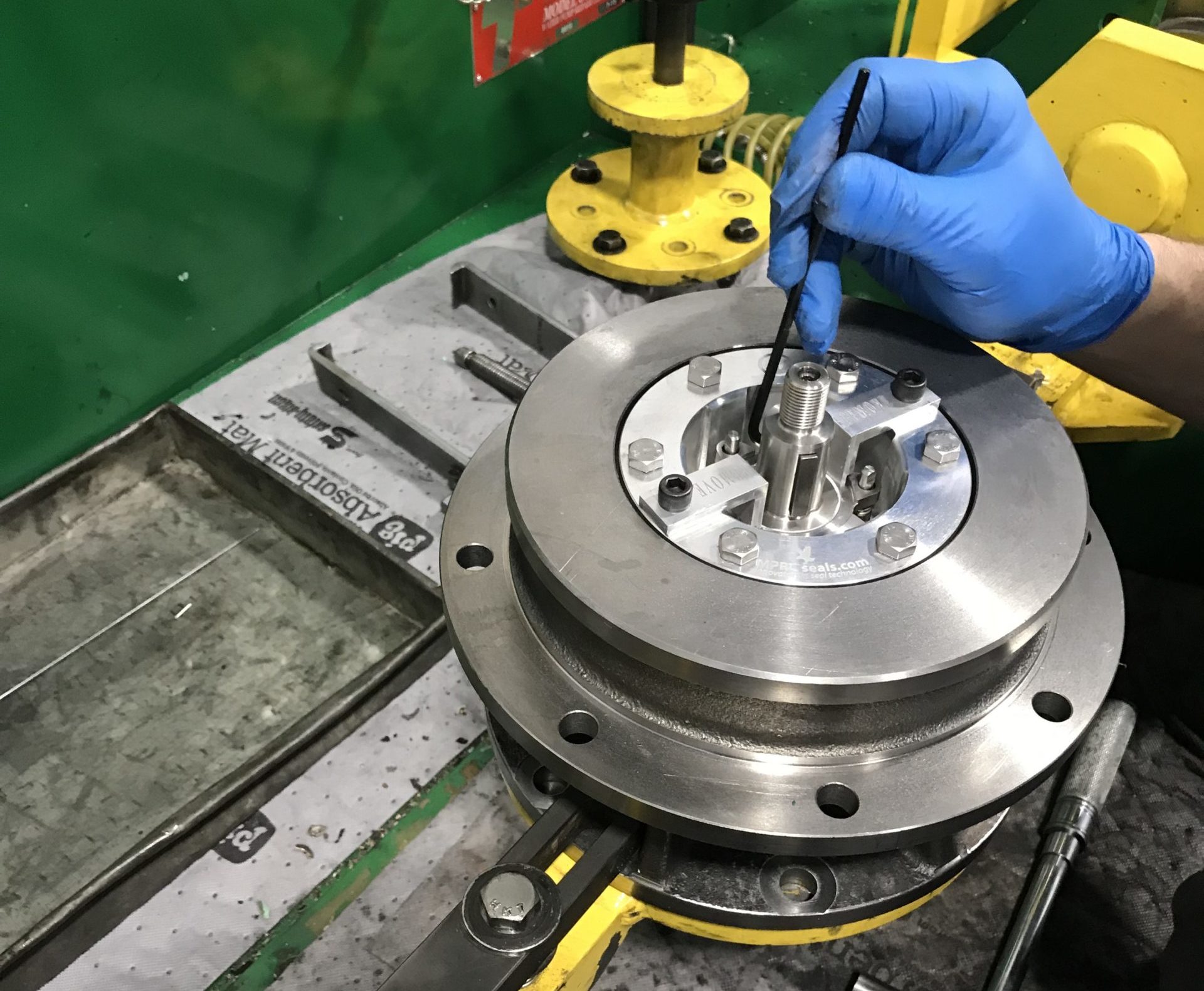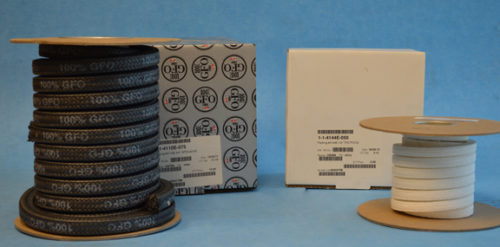Seals are a simple method of preventing fluid from escaping a vessel. Equipment like centrifugal pumps rely on seals to contain large volumes of pressurized fluid. There are two types of seals: the traditional pump packing known as mechanical packing or gland packing and the more modern mechanical seal. Mechanical packings rely on a rope-like packing, cut into rings, that wraps around the shaft of a pump to fill the voids and throttle or control the fluid from leaking.
Mechanical seals are often preferred when leakage is unacceptable, such as applications involving hazardous materials. Their durable construction can withstand more wear and tear than mechanical packing without leaking. We will explain how pump sealing works and describe the differences between pump packing versus mechanical seals to help you determine the best solution for your application.
Mechanical Pump Sealing Explained
Mechanical seals consist of three sealing components: rotating, stationary, and secondary seals. The seals prevent leaks from the circumferential gap between the shaft and other pump components. The rotating and stationary seals are lapped flat to keep fluid and gas from escaping. The rotating primary sealing element, fastened to the shaft, seals against the primary stationary sealing element, normally fastened to the gland.
Secondary seals are usually mounted between the stationary unit and the pump housing, and between the rotating unit and the pump shaft or sleeve. These are static seals, normally O-rings, PTFE wedges, or V-rings, and prevent leakage through these elements.
The rotating and stationary primary seals are the most vital sealing points. The faces of the mechanical seals press together with the force of a spring. In some cases, mechanical seals can also come as hydraulically balanced, in which case the fluid takes over from spring pressure to keep faces together while the pump is running. To make the mating surface as flat as possible, surfaces are lapped flat and machinists use high-precision light-band optical flats to ensure accuracy.
Choosing Between Mechanical Pump Packing vs. Mechanical Seals
Pump packing and mechanical seals each provide benefits depending on the application. Mechanical seals offer the following advantages:
- Reliability & Reduced Downtime: Long-term reliability and less downtime deliver a better return on investment.
- Protect Fluid Products From Leakage: Eliminates leaking common in packing. Leakage from packing is common compared to mechanical seals and can waste significant product.
- Low Maintenance: A lower risk of leakage reduces the need for time-consuming cleanup and adjustment compared to the glands in pump packing.
- Less Frequent Access to Stuffing Box: It is unnecessary to access the stuffing box for adjustment or replacement of the packing gland.
- Eliminates Sleeve Wear: Reliability of the seals eliminates frequent maintenance and removal of the sleeve that can result in costly sleeve replacement.
Pump packing offers the following advantages:
- Inexpensive: The initial cost of packing is lower than mechanical seals.
- Quick Installation: There is no need to decouple the driveshaft when installing packing rings, as with mechanical seals.
- Less Dependence on Equipment Condition: Mechanical seals often require excellent equipment conditions to be installed correctly.
- Misalignment and Axial/Radial Movement: Packing can tolerate misalignment and axial or radial movements more readily than mechanical seals.
- Flexible and Accommodating: Packing simplifies maintenance procedures and can reduce expensive parts inventory.
Seals We Offer
At MPRC Seals, we offer a range of sealing solutions. Our seals include:
- Outside Seals: A seal mounted outside the seal chamber boundaries.
- Bellows: A metal tube with an accordion function with little friction and no leaks.
- Cartridge Seals: Combines seal components, gland, and shaft sleeve into a single cartridge. They facilitate normally easier installation with preset face loading and quicker removal from pump shafts.
- Single: Two seal faces made from a hard and soft material for the rotating and stationary face.
- Double Seals: Eliminates fluid and gas leakage to deliver the highest safety levels, normally set up with a flush.
- Tandem Seals: Mounts an additional sealing chamber to the shaft seal to prevent evaporation and leakage.
Rely on MPRC Seals
At MPRC Seals, we have been delivering reliable seals since 1982. We find solutions to the most difficult sealing issues for customers in a range of industries. To learn more about our customer-focused sealing solutions, request a quote today.



4 Comments
Abrar
“Thanks for sharing such an amazing blog.
I have learnt alot from it.”
Dave Leatherman
Thanks so much for the positive feedback! We appreciate your comments and are glad you were able to take away some helpful information!
Tim Martin
Thankyou for posting this informative article, I was looking for a little information on Mechanical seals as I wanted to buy them for my project. This article helped alot.
Dave Leatherman
Thank you for the positive comments and feedback! We are glad to hear the article helped!